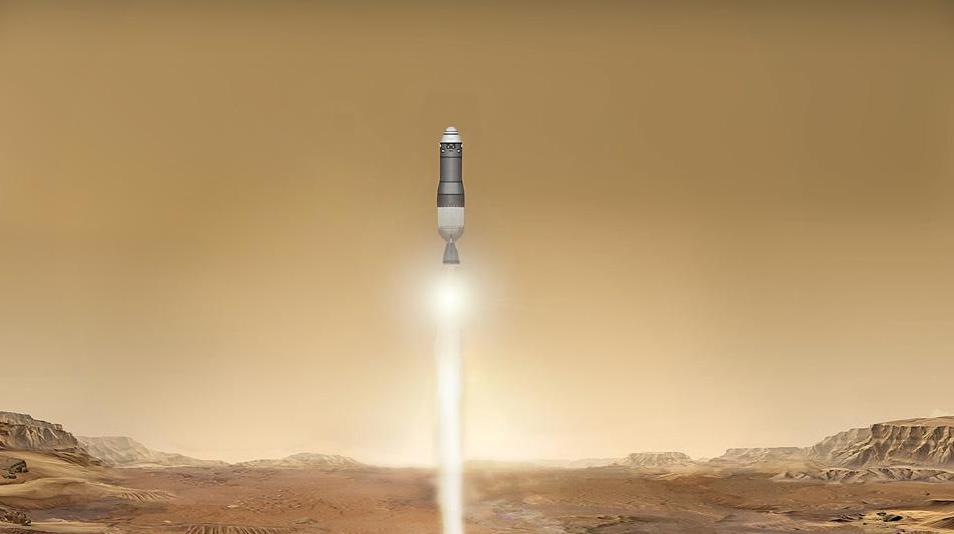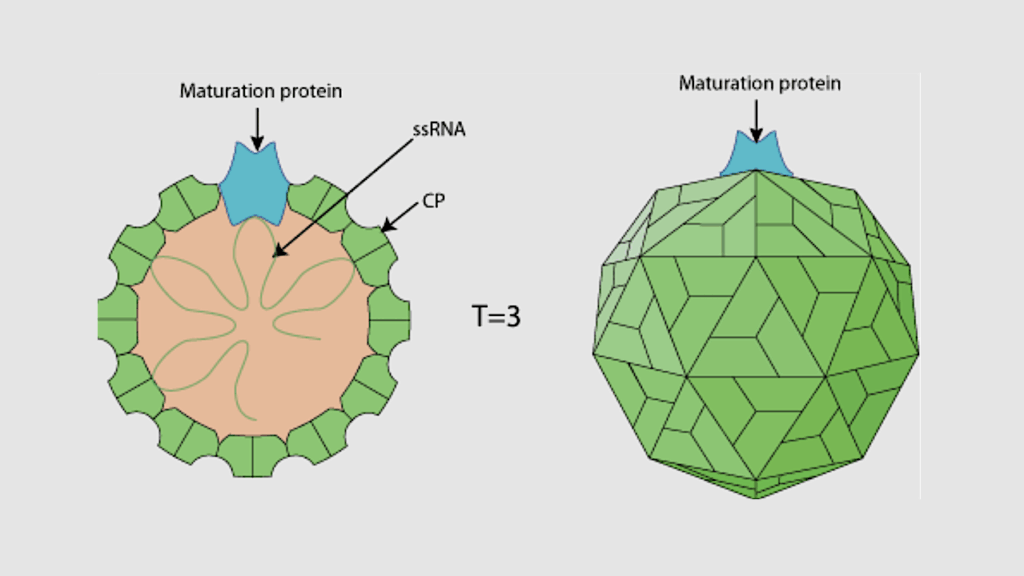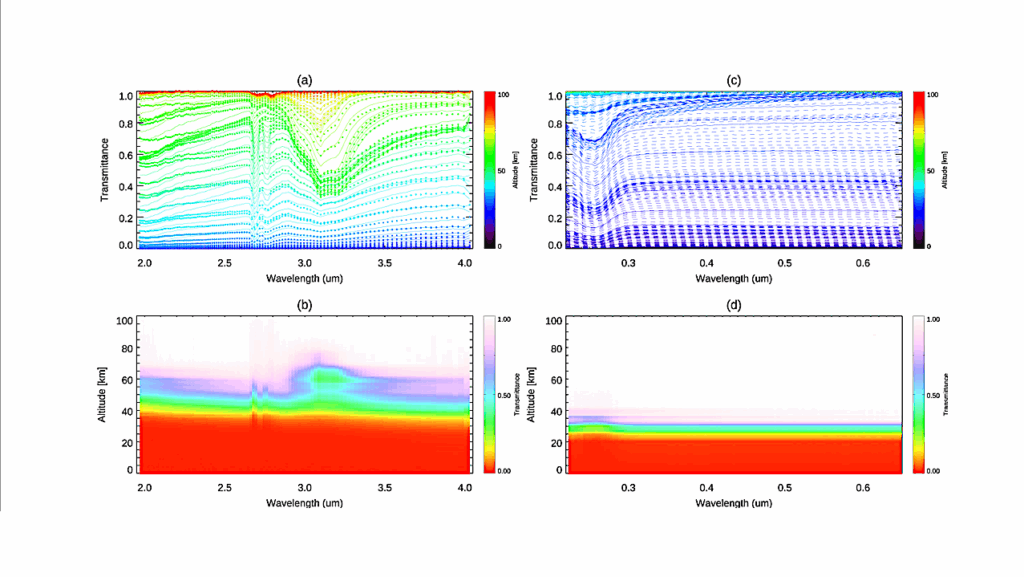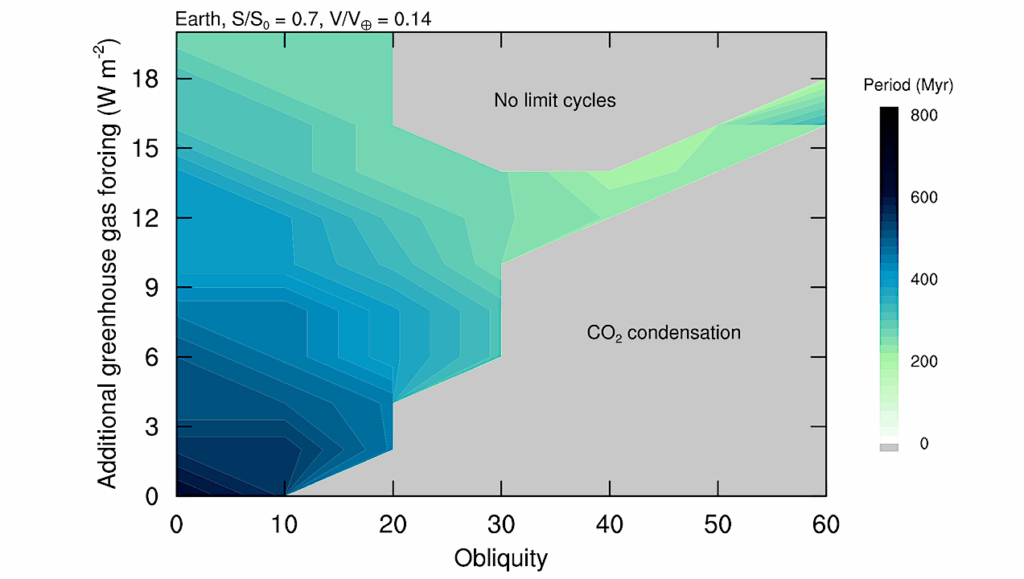National Environmental Policy Act – NASA Mars Sample Return Campaign

[Federal Register Volume 87, Number 213 (Friday, November 4, 2022)] [Notices] [Pages 66751-66754] From the Federal Register Online via the Government Publishing Office [www.gpo.gov] [FR Doc No: 2022-24065]
NATIONAL AERONAUTICS AND SPACE ADMINISTRATION
[NOTICE: (22-083); Docket Number-NASA-2022-0002]
National Environmental Policy Act; Mars Sample Return Campaign
AGENCY: National Aeronautics and Space Administration (NASA).
ACTION: Notice of availability of the Mars Sample Return (MSR) Campaign Draft Programmatic Environmental Impact Statement (PEIS); notice of public meetings; and request for comments.
SUMMARY: Pursuant to the National Environmental Policy Act of 1969, as amended (NEPA), the Executive order regarding Environmental Effects Abroad of Major Federal Actions, the Council on Environmental Quality’s NEPA implementing regulations, NASA’s procedures for implementing NEPA, and Department of the Air Force (DAF) procedures for implementing NEPA, NASA announces the availability of the MSR Campaign Draft PEIS for public review and comment. The Draft PEIS provides information and analysis related to the potential environmental impacts associated with the proposed action to retrieve a scientifically selected set of samples from Mars and transport them to Earth for scientific analysis and research. Cooperating agencies for this effort include the DAF for Hill Air Force Base, Utah, and Cape Canaveral Space Force Station, Florida; the Department of the Army for Dugway Proving Ground; the U.S. Department of Agriculture; and the U.S. Department of Health and Human Services–Centers for Disease Control and Prevention.
DATES: The 45-day public comment period begins on November 4, 2022 and ends on December 19, 2022. NASA encourages all interested parties to provide comments concerning the content and analysis presented in the Draft PEIS. To be considered in the Final PEIS, all comments must be postmarked or received online by 11:59 p.m. Eastern Standard Time (EST) (9:59 p.m. Mountain Standard Time [MST]) on December 19, 2022. NASA will hold four public meetings to further inform the public on the proposed action and solicit comments on the Draft PEIS. Two of those meetings will be “virtual” public meetings that will be accessible without geographic limitation via a WebEx online link and audio-only call-in telephone number. NASA will also host two in-person meetings in Utah. The public meeting schedule is as follows:
November 30, 2022, virtual meetings: 1-2:30 p.m. MST (3- 4:30 p.m. EST) and 6-7:30 p.m. MST (8-9:30 p.m. EST), meeting number/ access code: 901-525-785, online at https://jpl.webex.com/meet/msr and call-in for audio-only at +1-510-210-8882.
December 6, 2022, in-person meeting: 6-8 p.m. MST (local time) at Wendover Community Center, 112 E Moriah Avenue, Wendover, UT 84083.
December 7, 2022, in-person meeting: 6-8 p.m. MST (local time) at Clark Planetarium, 110 S 400 W, Salt Lake City, UT 84101.
To the maximum extent possible, in-person and virtual meetings will follow similar formats. At every meeting, NASA will describe the NEPA environmental review process, provide an overview of the proposed action and the environmental analysis presented in the Draft PEIS, and provide the public an opportunity to offer comments. At this time, NASA does not intend to provide English-language translation services, including American Sign Language interpretation, unless specifically requested at least one week prior to the meetings.
Each virtual meeting will begin with a brief welcome message followed by a 15-minute NASA presentation describing the purpose of the public meetings, the MSR Campaign PEIS project schedule, opportunities for public involvement, the proposed action and alternatives summary, discussion of potential environmental impacts from the proposed action, and an overview of the programmatic approach to NEPA compliance in general and NASA’s proposed action specifically. The presentation will be followed by the official public comment submittal portion of the meetings. The public comment portion of the meeting is scheduled to last one hour, during which members of the public may provide up to a three-minute comment.
In-person meetings will begin with the same presentation as the virtual meetings, but with a 45-minute open house session before the official public comment portion of the meeting. The open house session will consist of subject matter experts available onsite to answer questions from the public on a one-on-one basis and to discuss posters and distribute other materials (e.g., fact sheets, comment forms) related to the Draft PEIS and MSR Campaign.
The public meetings, both in-person and virtual, may end later than the stated time depending on the number of persons who wish to submit a comment. To allow everyone a chance to speak at the public meetings, NASA may extend the meeting hours. When providing a verbal comment, you must identify yourself, and any organization you represent, by name. Your remarks will be recorded and/or transcribed for inclusion in the public docket.
We encourage you to visit the informational website at https://www.nasa.gov/feature/nepa-mars-sample-return-campaign and attend one of the public meetings to learn about, and comment on, the content and analysis of the Draft PEIS. An electronic copy of the Draft PEIS will be made available at https://www.nasa.gov/feature/nepa-mars-sample-return-campaign beginning on November 4, 2022. Fact sheets and other information to be used during the public meetings will be made available at this same website beginning on November 11, 2022.
ADDRESSES: Advance registration to attend or provide a comment at the in-person or virtual public meetings is not required. Public meeting attendees may submit comments during the public meeting or by other means described below throughout the 45-day comment period. NASA will accept comments on the Draft PEIS until the expiration of the comment period on December 19, 2022. All comments received by NASA will be considered and responded to in the Final PEIS. Comments must be identified with Docket No. NASA-2022-0002, and may be sent to NASA as follows:
Federal e-Rulemaking Portal: https://www.regulations.gov. Follow the online instructions for submitting comments. Please note that NASA will post all comments on the internet without changes, including any personal information provided.
By mail to Steve Slaten, NASA Jet Propulsion Laboratory, 4800 Oak Grove Drive, M/S: 180-801, Pasadena, CA 91109-8099.
We encourage you to submit comments electronically through the Federal e-Rulemaking Portal at https://www.regulations.gov. If you submit your comments electronically, it is not necessary to also submit a hard copy. Regardless of the method used for submitting comments, all submissions will be posted without change to the Federal Docket Management System website (https://www.regulations.gov) and will include any personal information you provide. Before including your address, phone number, email address, or other personal identifying information in your comment, be advised that your entire comment may be publicly available at any time. While you can ask us in your comment to withhold from public review your personal identifying information, we cannot guarantee that we will be able to do so. Therefore, submitting this information to the Docket makes it public. You may wish to read the Privacy and Use Notice available on the Federal Docket Management System website (https://www.regulations.gov/user-notice). You may view Docket submissions at the Federal Docket Management System or electronically on the Federal Docket Management System website.
FOR FURTHER INFORMATION CONTACT: Mr. Steve Slaten, NASA Jet Propulsion Laboratory, by electronic mail at [email protected] or by telephone at 202-358-0016. For questions regarding viewing the Docket, please call Docket Operations, telephone: 202-366-9317 or 202-366-9826.
SUPPLEMENTARY INFORMATION: A Notice of Intent to prepare the MSR PEIS was published in the Federal Register on April 15, 2022 (87 FR 22578). Two virtual public scoping meetings were held on May 4 and May 5, 2022.
Under the proposed action, NASA, in coordination with the European Space Agency, proposes to conduct a campaign to retrieve samples from Mars and transport them to Earth. A scientifically selected set of samples (i.e., Martian rocks, regolith, and atmosphere), acquired and cached on the surface of Mars by the Perseverance rover, would be returned to Earth for scientific analysis and research.
Overall, the proposed MSR Campaign spans five elements: three flight elements and two ground elements. The flight elements include: (1) the Perseverance rover (previously addressed in the Final Supplemental Environmental Impact Statement for the Mars 2020 Mission); (2) a Sample Retrieval Lander and its subcomponents (the Lander''); and (3) an Earth Return Orbiter (theOrbiter”), with its subcomponents (which include the Earth Entry System [EES] and recovery of the EES). The two ground elements include: (1) EES transportation after landing; and (2) a Sample Receiving Facility (SRF). Per the mission goals stated in the Mars 2020 Final Supplemental Environmental Impact Statement, NASA’s Mars 2020 mission launched the Perseverance rover in July 2020; the rover landed on Mars in February 2021 and has begun collecting and storing samples for potential return to Earth for study.
The Lander launch would occur from either Kennedy Space Center or Cape Canaveral Space Force Station in Florida and would consist of a routine payload, which has been addressed in previous NEPA analysis (NASA’s Routine Payload Environmental Assessment). Launch of the Orbiter would be managed by the European Space Agency and occur from French Guiana. The launch of the Orbiter is addressed in the Draft PEIS pursuant to Executive Order 12114, Environmental Effects Abroad of Major Federal Actions.
The proposed EES landing location is the DAF-managed Utah Test and Training Range (UTTR), located approximately 80 miles west of Salt Lake City. Additional proposed activities associated with recovery team and support equipment staging would be conducted on the Dugway Proving Ground. As noted earlier, additional Earth-based ground elements associated with sample transportation and sample management/research (otherwise referred to as “curation”) involving the development and operation of an SRF are also part of the overall MSR Campaign architecture.
The proposed action and a no action alternative were evaluated in the Draft PEIS. Under the no action alternative, the MSR Campaign would not be undertaken and investigation of Mars as a planetary system would be severely constrained due to the cost and complexity of sending into space (and operating) science instruments capable of conducting the appropriate level of sample analysis in space or on Mars where in situ analyses could be performed. The environmental resource areas analyzed in the Draft PEIS include health and safety, cultural resources, hazardous materials and waste, soils and geology, biological resources, water resources, air quality and climate, land use, socioeconomics, environmental justice/protection of children, noise, and infrastructure.
NASA provided press releases to local newspapers and distributed letters to stakeholders, Native American tribes, and other interested parties. In addition to availability on the website (https://www.nasa.gov/feature/nepa-mars-sample-return-campaign), hard copies of the Draft PEIS will be made available at the following public libraries.
- Cocoa Beach Public Library, 550 N Brevard Avenue, Cocoa Beach, FL 32931
- Central Brevard Library and Reference Center, 308 Forrest Avenue, Cocoa, FL 32922
- Cape Canaveral Public Library, 201 Polk Avenue, Cape Canaveral, FL 32920
- Titusville Public Library, 2121 S Hopkins Avenue, Titusville, FL 32780
- Melbourne Library, 540 E Fee Avenue, Melbourne, FL 32901
- Merritt Island Public Library, 1195 N Courtenay Parkway, Merritt Island, FL 32953
- NASA Headquarters Library, 300 E Street SW, #1120, Washington, DC 20024
- Tooele City Public Library, 128 West Vine Street, Tooele, UT 84074
- Grantsville Library, 42 Bowery Street, Grantsville, UT 84029
- Brigham City Public Library, 26 E Forest Street, Brigham City, UT 84302
- Tremonton Municipal Library, 210 N Tremont Street, Tremont, UT 84337
- West Wendover Branch Library, 590 Camper Drive, West Wendover, NV 89883
- Garland Public Library, 86 W Factory Street, Garland, UT 84312
NASA is taking a programmatic approach to analyzing the potential environmental consequences of the MSR Campaign because of the campaign’s large scope and uncertainty regarding future timing, locations, and environmental impacts associated with the two ground element actions (sample transportation and SRF). This programmatic approach allows for near-term focus on issues that are ripe for decision and establishes a foundation for follow-on tiering (sequencing) to future actions, thus minimizing detailed topics previously decided at the initial programmatic level. While certain actions related to site-specific analysis of the ground elements are considered programmatically in the Draft PEIS (i.e., likely methods of sample transportation and representative examples of an SRF), NASA’s NEPA approach provides the public with information on the totality of the MSR Campaign, thereby avoiding possible confusion about potential future proposed actions, which may be analyzed further in a tiered NEPA document. To the extent it is required, future tiered NEPA analysis would address specific environmental impacts related to EES transportation (e.g., over-the-road or via aircraft) from the UTTR complex to an SRF. The type, location, construction (if any), and operation of an SRF would also be analyzed in specific detail after facility requirements are more robustly characterized.
Planetary Protection
“Planetary protection” is the discipline/practice of protecting solar system bodies (e.g., a planet, planetary moon, or asteroid) from contamination by Earth life and, in the case of sample return missions, protecting Earth from potential hazards posed by extraterrestrial material.
NASA’s planetary protection policies address missions involving samples returned from various solar system bodies as detailed in NASA Policy Directive 8700.1F, NASA Policy for Safety and Mission Success. NASA’s policies are guided by the planetary protection policies published by the international Committee on Space Research, which are informed by the United Nations Outer Space Treaty. NASA Procedural Requirement 8715.24, Planetary Protection Provisions for Robotic Extraterrestrial Missions, provides guidelines for categorizing missions according to their destination and proposed activities. NASA Procedural Requirement 8715.24 also provides specific procedural requirements for certain mission categories. All missions returning samples are designated as Category V. Under Category V, there are two subcategories: (1) Unrestricted Earth Return–sample return missions from solar system bodies deemed by scientific consensus to have no extraterrestrial life (e.g., Earth’s Moon and Venus), and (2) Restricted Earth Return (RER)–sample return missions from solar system bodies deemed by scientific opinion to have a possibility of harboring indigenous life forms (e.g., Mars or Europa). RER missions have requirements to break the chain of physical contact with the target body as well as isolate and robustly contain restricted samples during all mission phases through safe receipt and transport to a containment facility on Earth. Due to the potential for ancient life forms on Mars, the sample return portion of the proposed MSR Campaign is expected to be classified as a Category V RER activity, which requires preparation of an Environmental Impact Statement.
Cheryl Parker, Federal Register Liaison Officer. [FR Doc. 2022-24065 Filed 11-3-22; 8:45 am] BILLING CODE 7510-13-P
Astrobiology








